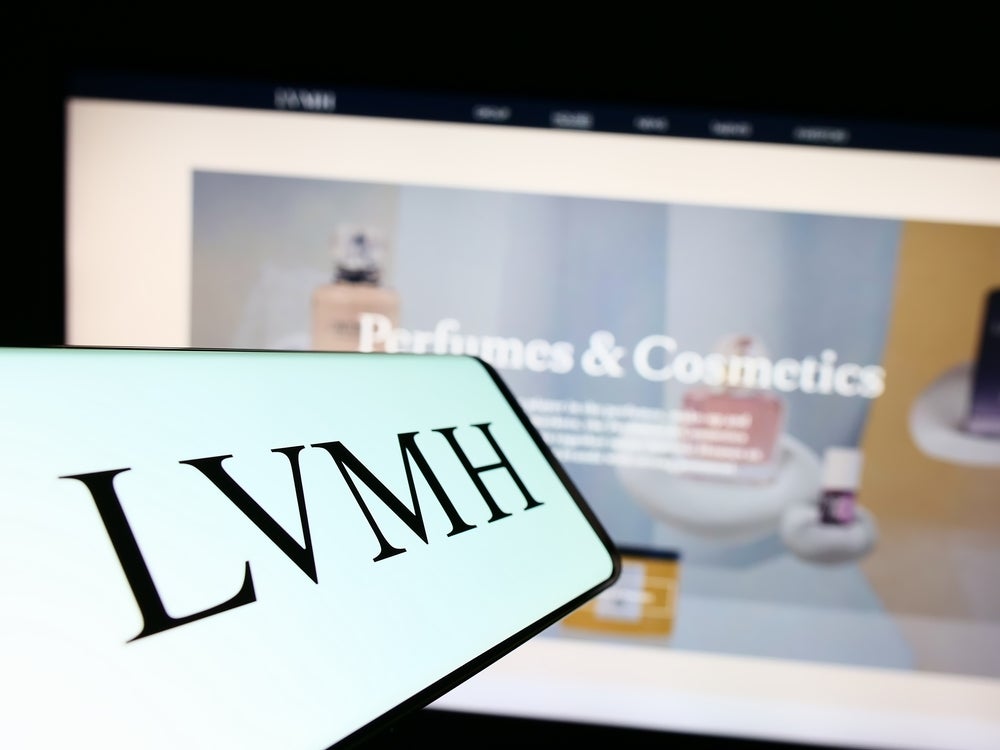
Global luxury goods conglomerate LVMH has maintained its exceptional growth trajectory in the first half of the fiscal year 2023, with reported group revenue reaching an impressive €42.2bn ($47bn), marking a significant 15.0% increase.
This growth comes amidst ongoing economic difficulties, highlighting the unwavering appeal of LVMH’s products to consumers worldwide.

Discover B2B Marketing That Performs
Combine business intelligence and editorial excellence to reach engaged professionals across 36 leading media platforms.
Despite a slight slowdown in the second quarter, where revenue rose by 13.2%, compared to 16.8% in the first quarter, the overall performance remains remarkable.
GlobalData senior apparel analyst attributes Pippa Stephens this continued success to LVMH’s solid brand identities and enduring relevance among young consumers, as evidenced by the recent struggles faced by its main competitor, Kering and other independent labels in the industry.
Regional performance and future prospects
- Japan and Asia lead the way: Among the regions, Japan emerged as the top-performing market for LVMH, experiencing organic growth of an impressive 31%. The relaxation of travel restrictions at the end of 2022 played a significant role in driving demand from both local and international tourists.
Following closely behind, the rest of Asia recorded a robust 23% organic growth, benefiting from a similar increase in tourist activity.
Europe also performed well, with revenue rising by 22%, as tourists returned, taking advantage of favourable exchange rates.

US Tariffs are shifting - will you react or anticipate?
Don’t let policy changes catch you off guard. Stay proactive with real-time data and expert analysis.
By GlobalDataThe recent announcement of LVMH’s premium partnership with the Paris 2024 Olympic and Paralympic Games, where its brands will play a prominent role, is expected to further boost its performance in Europe next year.
- Challenges in the US market: The US market proved to be the weakest region for LVMH, with organic revenue rising by a modest 3%. Factors contributing to this slowdown include local consumers buying luxury items abroad and mounting economic problems.
After two strong years buoyed by government stimulus payments, consumer spending in the region has taken a step back.
Divisional performance
- Selective retailing shines: LVMH’s Selective Retailing division, which includes popular brands such as Sephora and DFS airport stores, stood out with reported revenue growth of 26.0%. Sephora, in particular, performed exceptionally well, benefiting from its superior brand offerings and successful expansion into new regions, such as the recently opened store in Westfield London.
- Fashion & leather goods: The company’s largest division, Fashion & Leather Goods, achieved strong growth of 16.7%. Luxury brands such as Louis Vuitton, Christian Dior, Celine and Loewe received accolades for their outstanding craftsmanship and classic styles, contributing to their enduring appeal among consumers.
The Path Ahead
While luxury shoppers are somewhat protected from inflationary pressures due to their higher discretionary incomes, some have begun cutting back on spending due to rising costs.
This raises the question of whether LVMH’s impressive growth trajectory can be sustained in the long term.
However, the company’s strong brand identities, continued relevance among younger consumers and strategic partnerships for major events provide a positive outlook for its future performance in the global luxury goods market.





